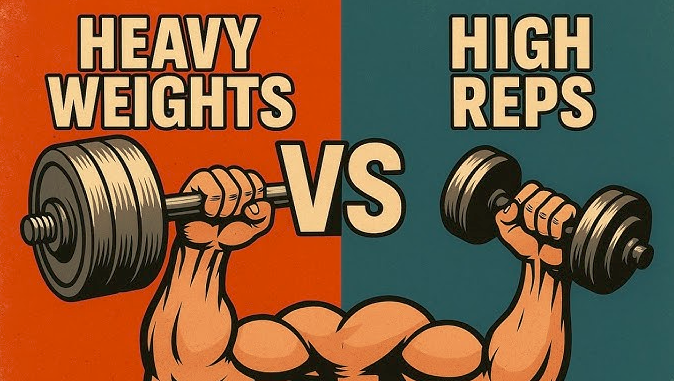Nutrition Plan Core Power: A Complete Guide to Fueling Fitness and Recovery
Introduction
Nutrition is the foundation of health, performance, and recovery. Whether you’re an athlete, a fitness enthusiast, or simply trying to live healthier, the right balance of nutrients can transform your results. Many people look for structured meal strategies through a nutrition plan, while others turn to convenient options like Core Power protein shakes for quick recovery.
But how do these two approaches compare? Can you build a sustainable nutrition plan with Core Power as part of it? This article explores both options in detail, helping you understand how to maximize your fitness and wellness journey.
What Is a Nutrition Plan? Nutrition Plan Core Power:
A nutrition plan is a structured approach to eating, tailored to your health, fitness, and lifestyle goals. Unlike random dieting, it provides consistency and balance.
Key Components of a Nutrition Plan: Nutrition Plan Core Power:
- Macronutrients: Carbohydrates, proteins, and fats in proper ratios.
- Micronutrients: Vitamins and minerals from whole foods.
- Meal Timing: Eating at regular intervals to support energy and recovery.
- Hydration: Adequate water intake for joint health and performance.
- Personalization: Adjusted for age, gender, activity level, and fitness targets.
A good nutrition plan supports both daily performance and long-term health.
What Is Core Power? Nutrition Plan Core Power:
Core Power is a ready-to-drink protein shake produced by Fairlife, designed for athletes and active individuals who want quick, high-quality nutrition.
Features of Core Power
- Protein-Rich: Contains 26g–42g of protein per bottle.
- Made from Ultra-Filtered Milk: Provides natural calcium and electrolytes.
- Lactose-Free: Suitable for many people with lactose intolerance.
- Convenient Packaging: Portable and shelf-stable.
- Flavor Options: Chocolate, vanilla, strawberry, banana, and more.
Core Power is often used post-workout to aid muscle recovery and reduce fatigue.
How They Work Together
Customization vs Convenience
- A nutrition plan is personalized, offering flexibility in food choices.
- Core Power is fixed in nutrients but highly convenient for quick fueling.
Whole Foods vs Supplementation: Nutrition Plan Core Power:
- Nutrition plans prioritize whole foods like chicken, vegetables, nuts, and grains.
- Core Power provides concentrated protein but lacks fiber and full nutrient diversity.
Long-Term vs Short-Term Goals
- Nutrition plans build sustainable, lifelong eating habits.
- Core Power is ideal for immediate post-workout recovery or when time is limited.
Benefits of a Nutrition Plan:
Following a structured nutrition plan has numerous health advantages:
- Balanced Energy Levels: Prevents sugar crashes and fatigue.
- Weight Management: Helps with fat loss or muscle gain.
- Improved Recovery: Whole foods provide antioxidants and anti-inflammatory benefits.
- Disease Prevention: Reduces risks of diabetes, heart disease, and obesity.
- Personalization: Adjusted to your lifestyle, preferences, and goals.
Benefits of Core Power Protein Shakes
Core Power has become popular because of its ease and effectiveness.
- Muscle Recovery: High protein aids muscle repair after workouts.
- Portability: Perfect for busy schedules and athletes on the go.
- Electrolytes: Helps replenish minerals lost during sweat.
- Digestibility: Lactose-free and easy to consume.
- Quick Nutrition: No cooking or prepping needed.
Designing a Nutrition Plan with Core Power
The real strength comes when you combine a nutrition plan with. Instead of choosing one over the other, use them together strategically.
Sample Daily Routine
- Breakfast: Oatmeal with fruits and nuts.
- Mid-Morning Snack: Greek yogurt with berries.
- Lunch: Grilled chicken, quinoa, and steamed vegetables.
- Post-Workout Snack: Core Power protein shake.
- Dinner: Salmon with sweet potato and spinach.
- Evening Snack (optional): A handful of almonds or a smoothie.
This approach balances whole foods with the convenience of Core Power.
Potential Drawbacks
Nutrition Plan Challenges
- Time-consuming meal prep.
- Requires planning and discipline.
- Risk of imbalance if not well designed.
Core Power Limitations
- Not a full meal replacement.
- More expensive than cooking whole foods.
- Lacks fiber and a broad micronutrient profile.

Who Should Use a Nutrition Plan with Core Power?
- Athletes: For recovery after training sessions.
- Students/Professionals: For quick nutrition during busy days.
- Weight Trainers: To hit protein goals easily.
- Travelers: As a portable supplement when whole foods aren’t available.
Long-Term Strategy: Balance Is Key
The healthiest approach isn’t choosing a nutrition plan vs Core Power but learning how to integrate them. Whole foods ensure long-term health, while Core Power offers a convenient boost when needed.
Conclusion
Both nutrition plans and Core Power protein shakes play an important role in fitness and overall wellness. A nutrition plan provides balance, personalization, and sustainability, while Core Power offers convenience and quick recovery support.
The smartest strategy is combining the two: rely on a nutrition plan for your daily meals and use Core Power as a supplement when time is short or after workouts. This way, you get the best of both worlds—consistency and convenience.
FAQs
1. Can Core Power be part of a long-term nutrition plan?
Yes, Core Power can be used alongside whole foods as a supplement, especially post-workout.
2. Is Core Power better than cooking meals?
No. Meals provide a broader nutrient profile. Core Power is a supplement, not a replacement.
3. How often should I drink Core Power?
1–2 times per day, depending on your protein needs and workout schedule.
4. Can Core Power help with weight loss?
Yes, when used as part of a calorie-controlled nutrition plan, it supports muscle maintenance and satiety.
5. Is Core Power suitable for lactose-intolerant people?
Yes. Core Power is lactose-free, making it easier to digest for those sensitive to dairy.



